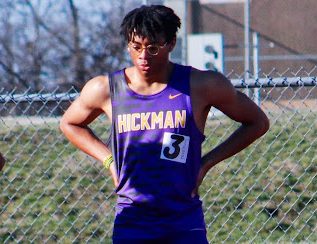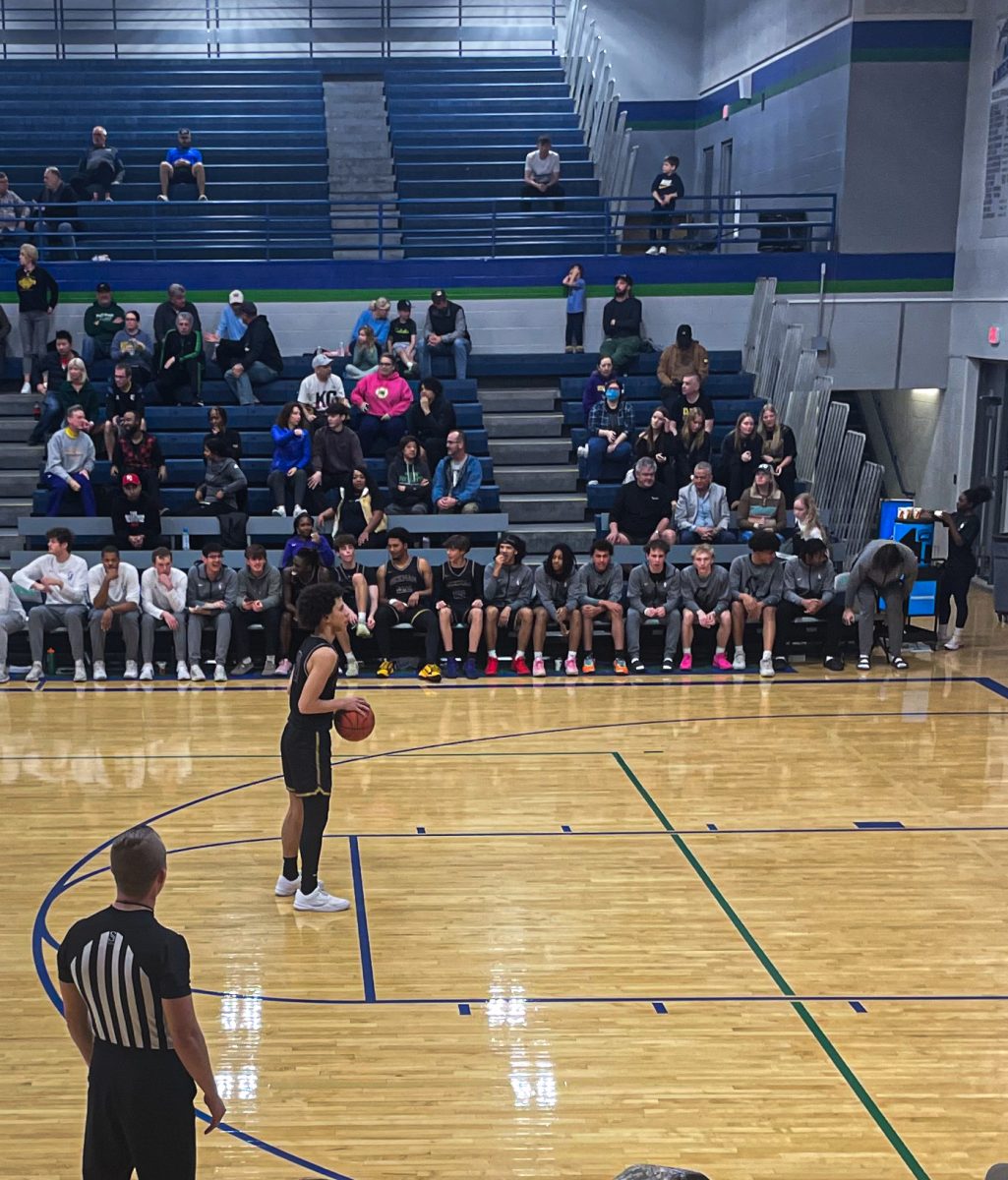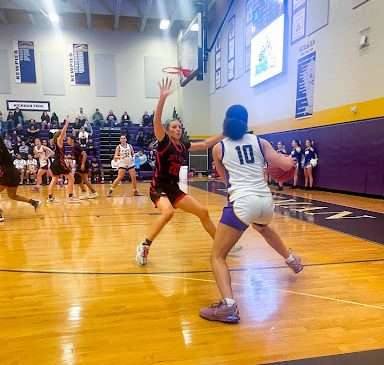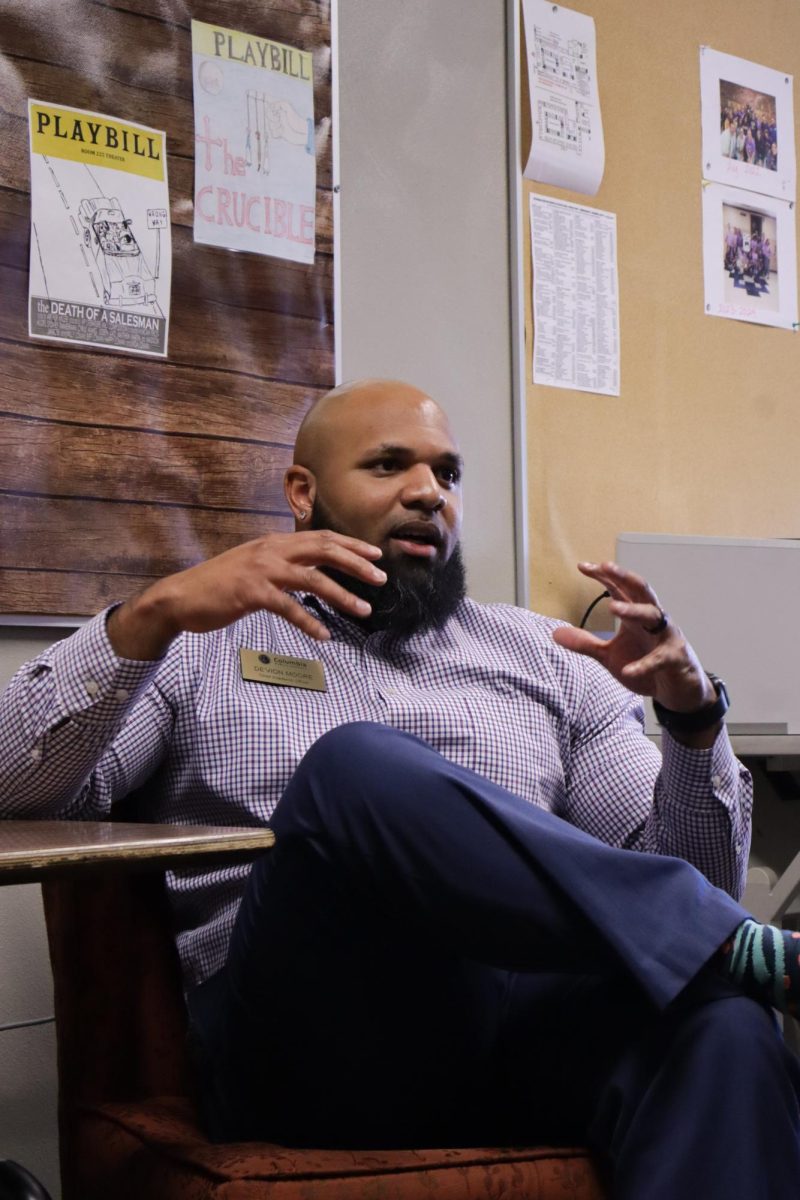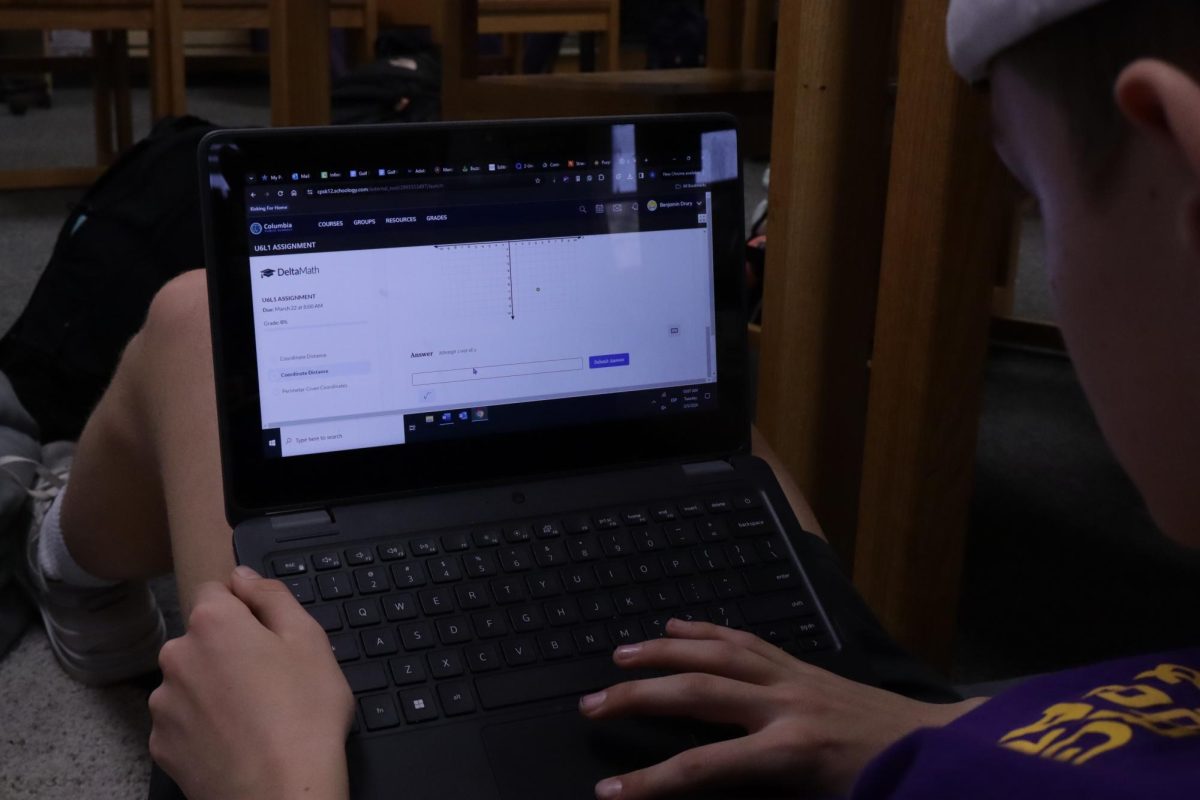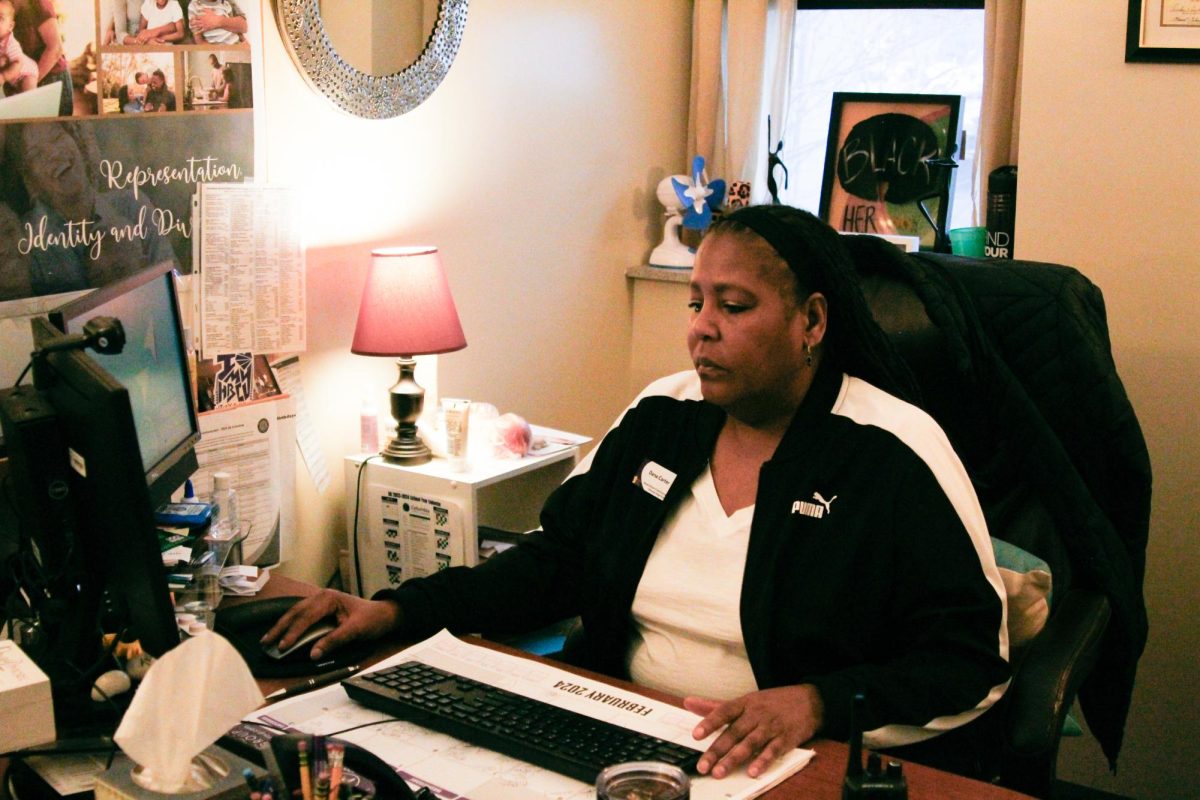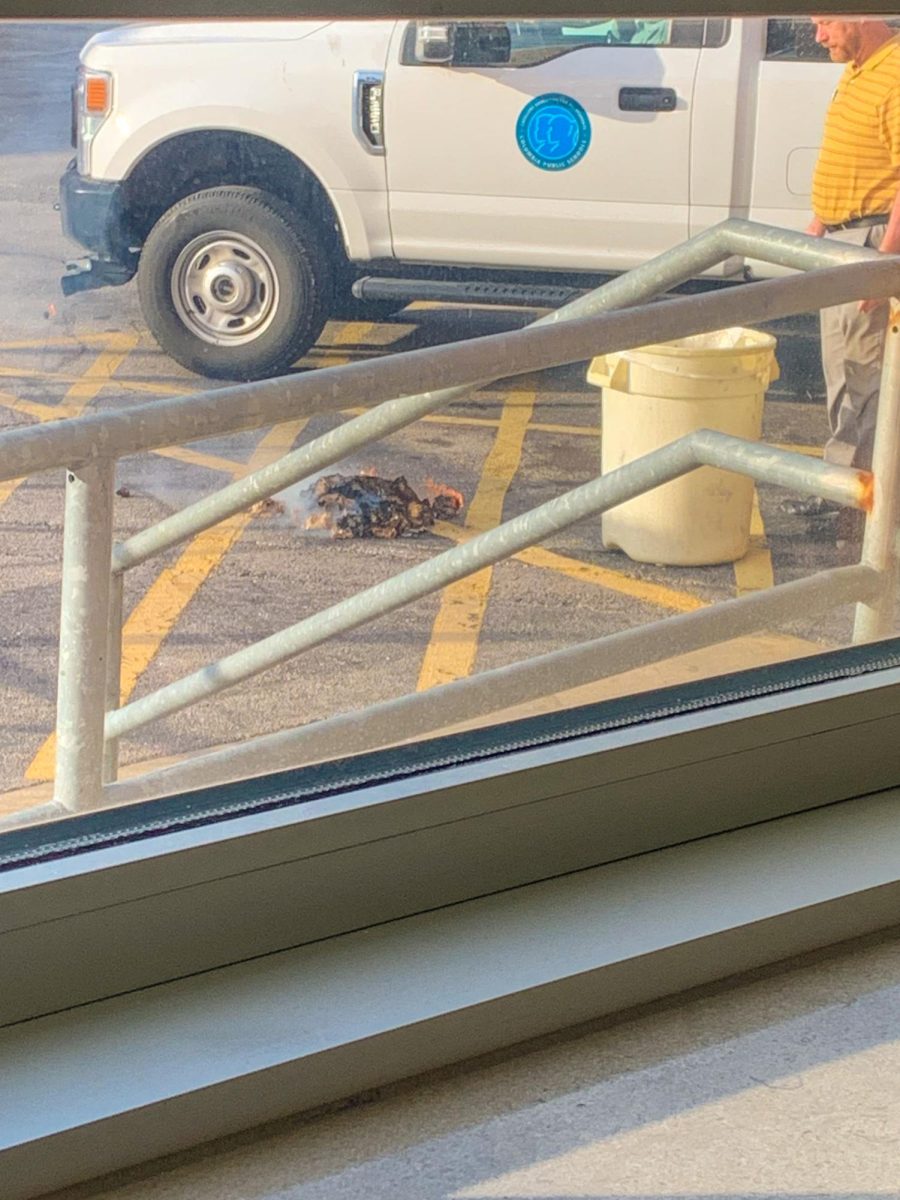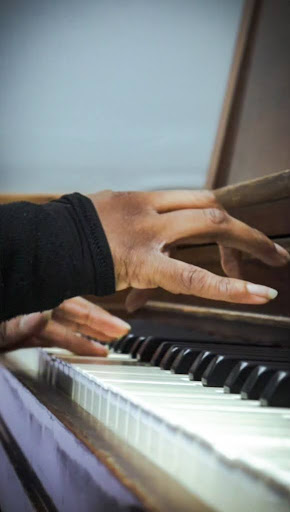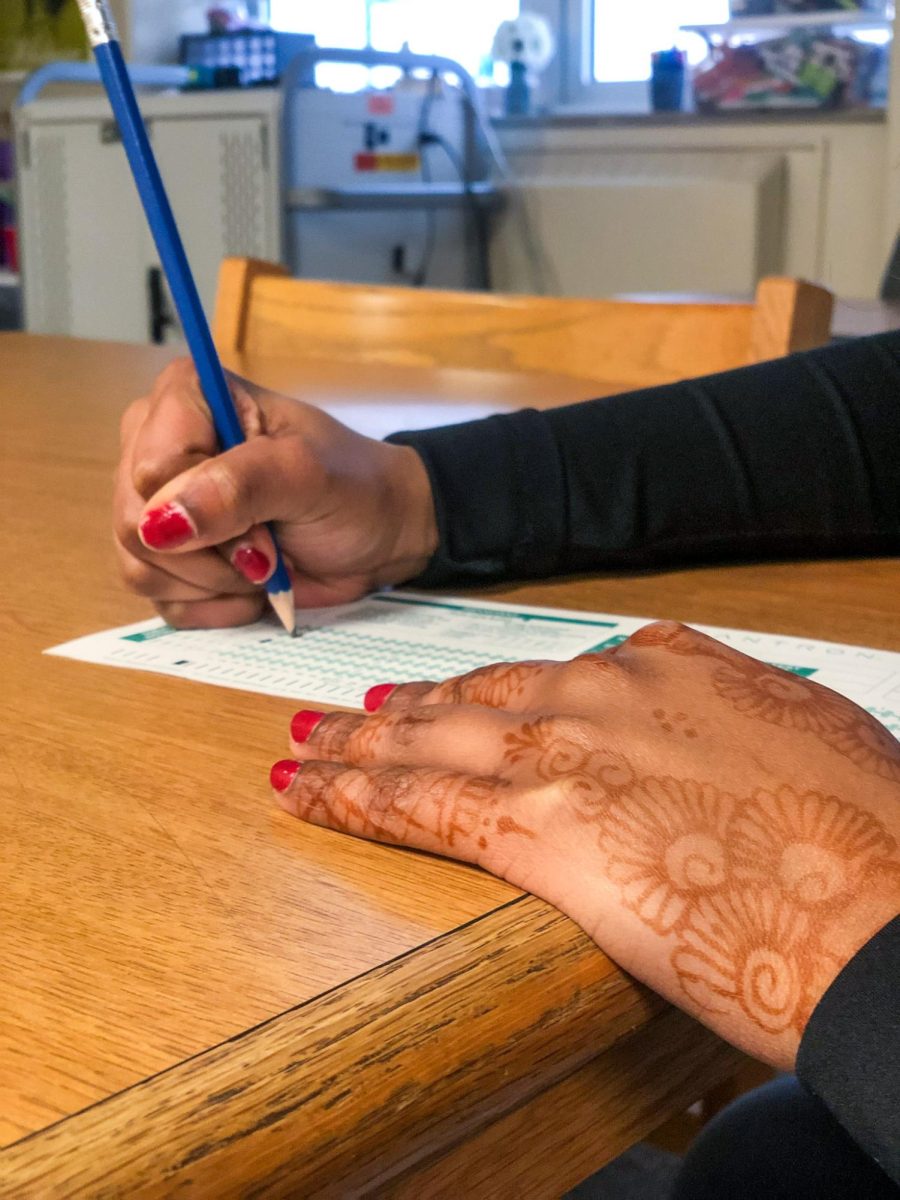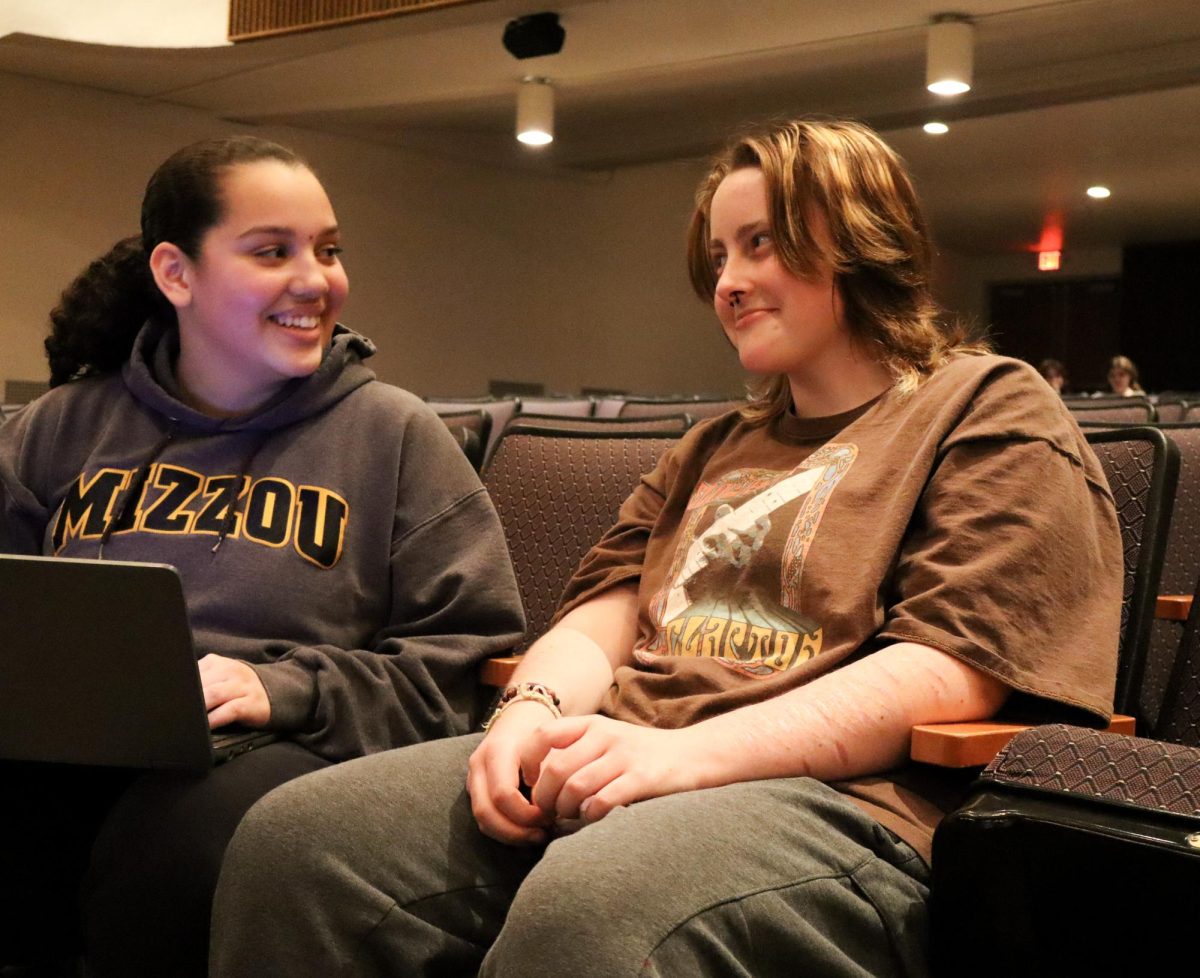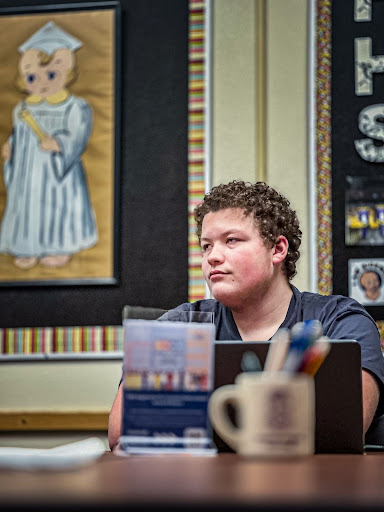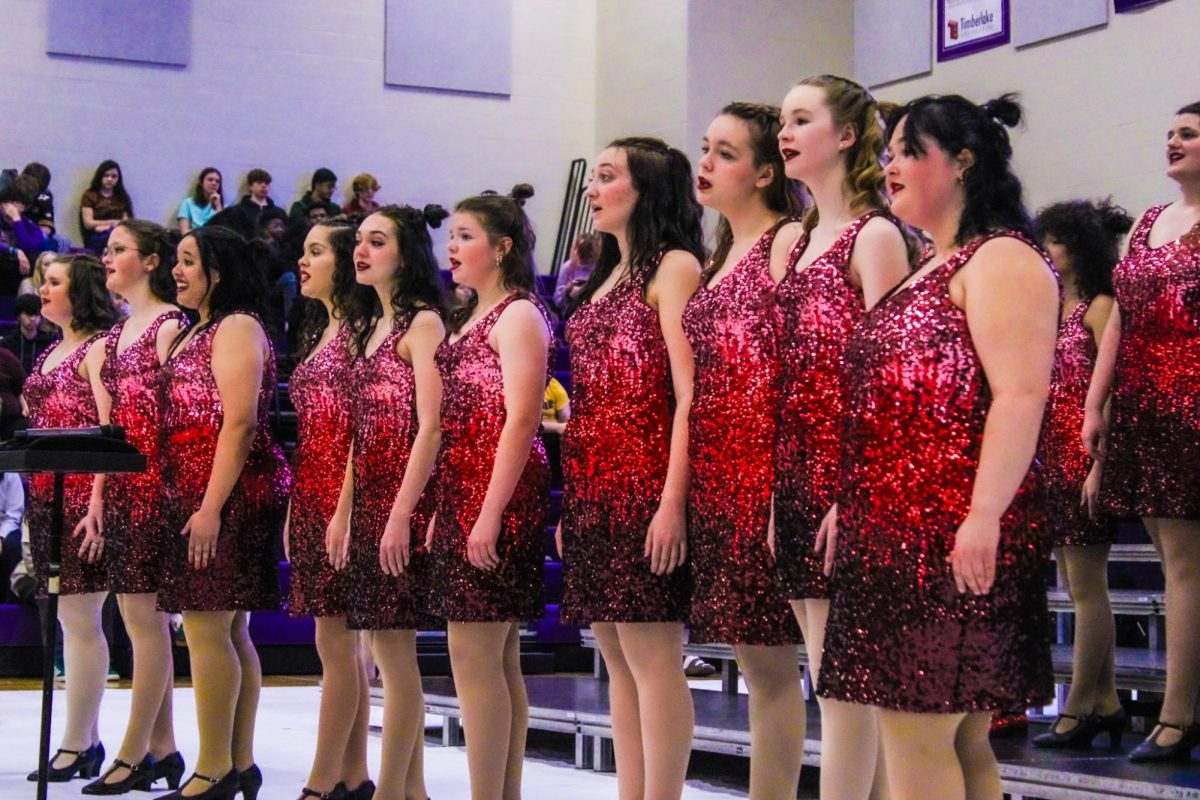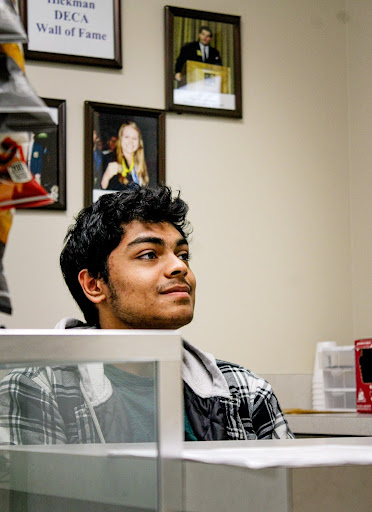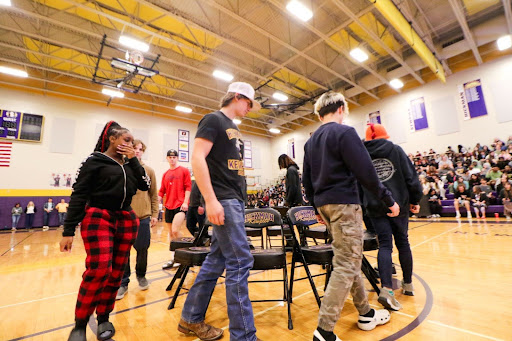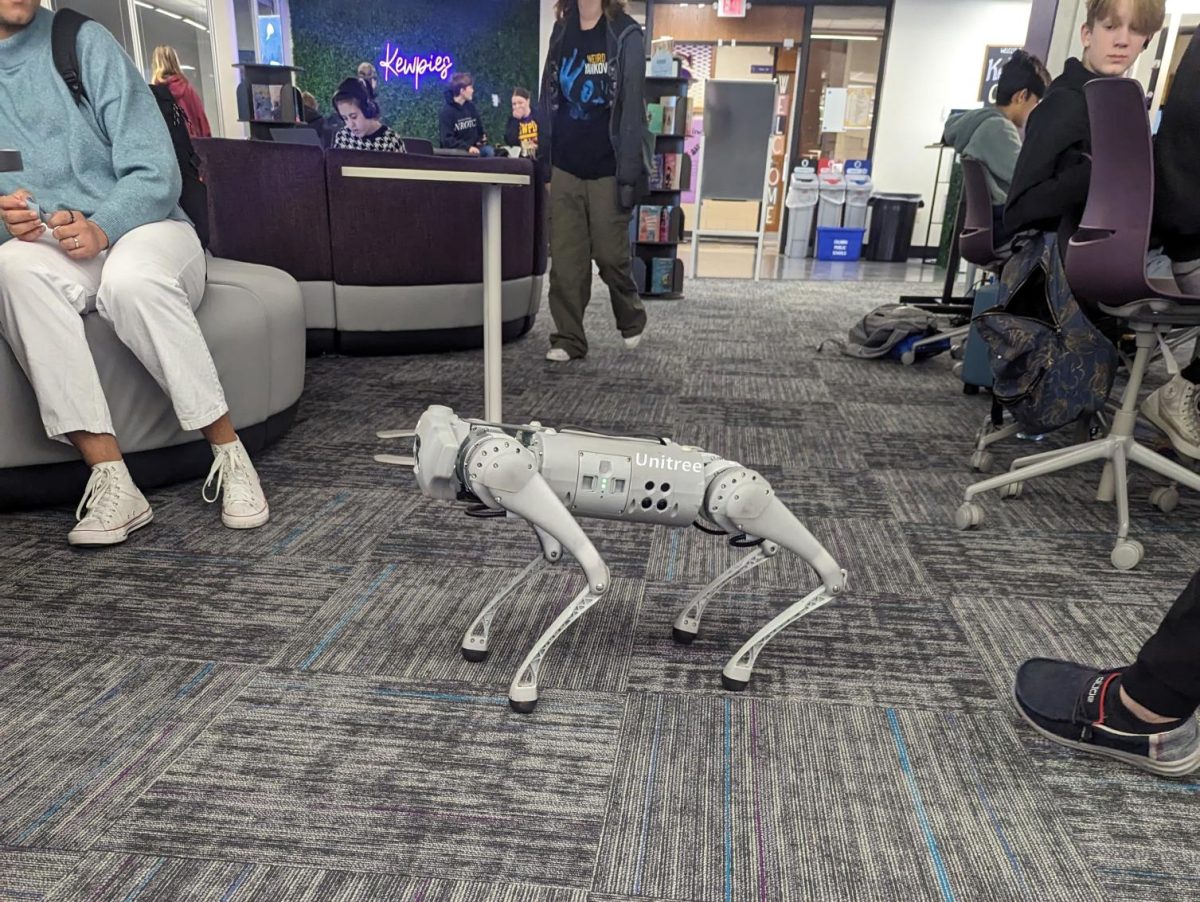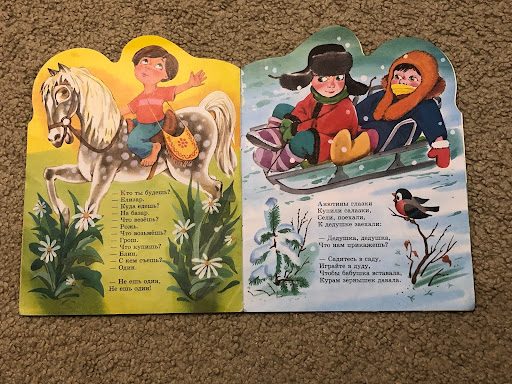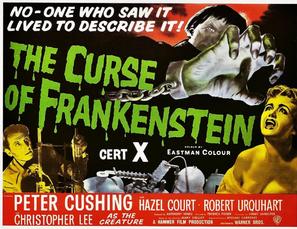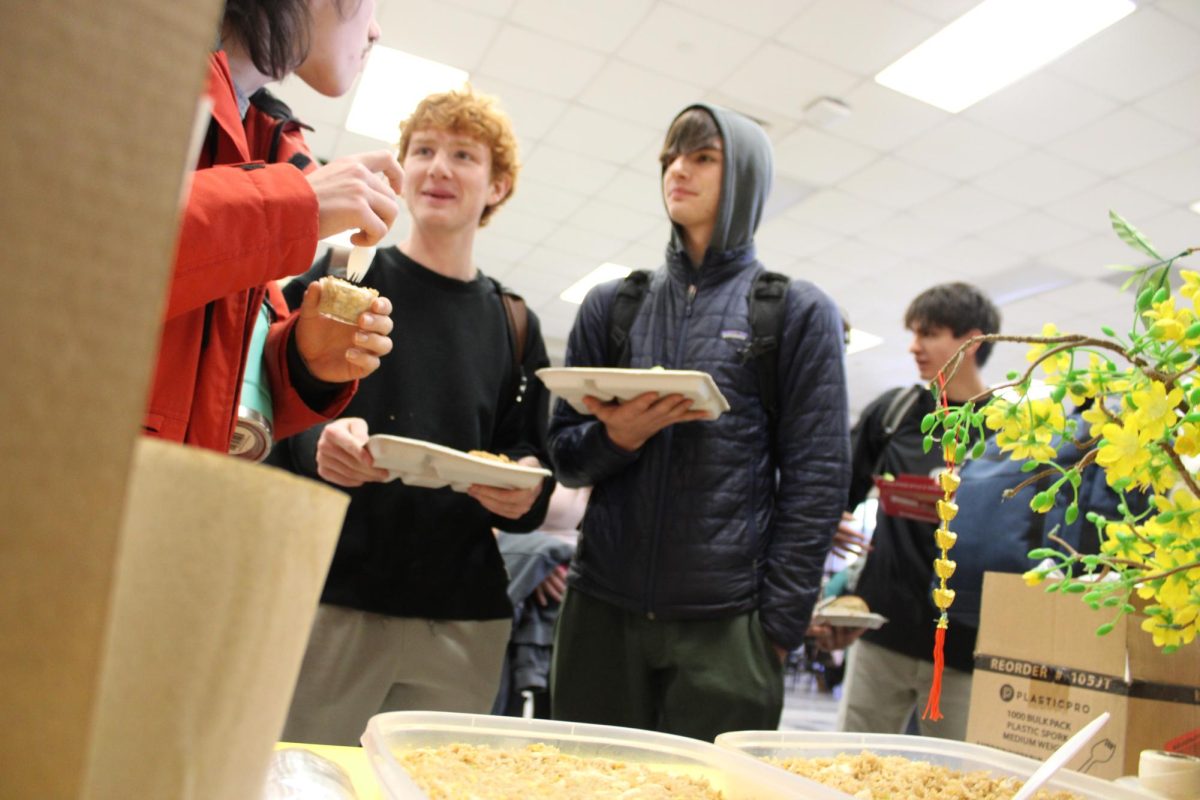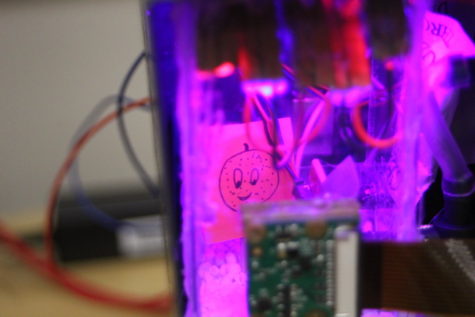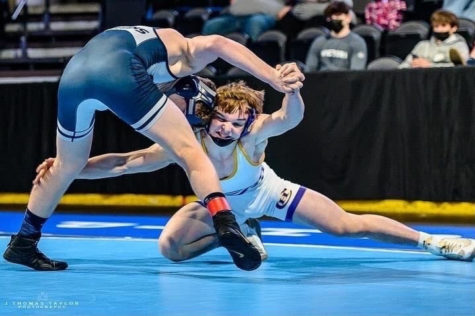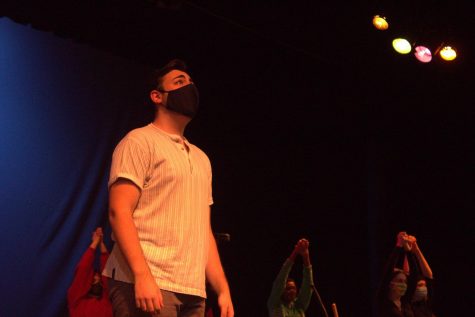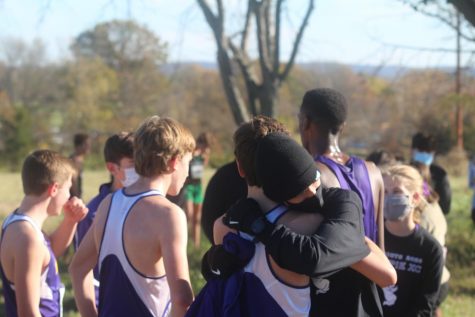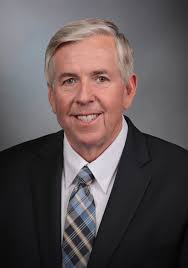Celestine
One of the first African American students at Hickman talks about her experiences.
The Hickman we know now is one of the most diverse and culturally unique schools in the state. In fact, the word “Diversity” is scribed over the archways leading into our traditions lobby, though these archways did not always stand within the school. Prior to 2003, the archways were the entrance to our school. Years before, during the mid 1950s a revolutionary event occured right under those archways: the first six African American students arrived through those doors in the fall of 1954. In the years to follow only a small number of black students walked under those pillars. One of whom, arriving in 1957, was Celestine Guyton Hayes
Hayes had just moved from St. Joseph, Missouri and in 1956 had already began her freshman year of high school at Central High School, which was desegregated completely in ‘54. Her father, Reverend John R. Guyton, was a Methodist minister in town and was confident in his children’s ability to be successful students, whether they attended the all black high school (Douglas) or the newly desegregated Hickman.
“I remember so well the day the Mr. Eliot Battle of Douglas high school came to visit my father,” Hayes said. “He asked my father to have me attend Douglas. He explained many good things about the school. My dad told him that the decision of where I would attend was mine. ‘Whatever Celestine wants to do will be fine,’ he told him.”
Desegregation in Columbia Public Schools was a city altering event that was avidly supported, and almost equally opposed, among both black and white citizens. After the landmark Supreme Court decision Brown v Board of Education,which outlawed racially segregated school systems, was announced by Chief Justice Earl Warren on May 17, 1954, the afternoon newspapers in Columbia were filled with reactions from local and state officials about the decision. Douglas principal C.B. Walker said the decision would mean “better educational opportunities for Negro boys and girls.” Stuart Parker, president of the Columbia chapter of the NAACP at the time, said the decision “was one of the greatest advancements since Emancipation Proclamation.” The Columbia School board met five days after the decision in the Warren court and adopted a resolution on the recommendation of superintendent Aslin formally ending segregation in the district.
In the fall of 1954, the new policy regarding segregation resulted in little immediate change in the racial boundaries within the school district. In mid-September there were 11 black students at Ridgeway Elementary, two at Field Elementary, six at Jefferson Junior High School, and three black students at Hickman. By mid October, the Ridgeway PTA postponed its annual chili supper because of the possibility that some of the 11 black students and their families might attend. After much debate between the Ridgeway parents, Superintendent Aslin, and his committee on school boundaries, the chili supper issue was resolved in a conference between Ridgeway Principal Joe Barnes and President of the Columbia NAACP, Stuart Parker. In A History of Public School Education in Columbia, it describes how “Barnes recalled Parker saying the principal issue was the desegregation of the schools and the chili supper issue was not important at the time. Following the meeting with Parker, Barnes said he told the PTA to go ahead with the chili supper and not worry about whether black persons would attend. None did.”
Although there was some opposition early in the racial reconstruction of the schools, by late 1957 Hickman had begun to accept the changes being imposed on it and begin its transition into the diverse culture it harbors today.
Upon her arrival, Hayes immediately fell in love with the Hickman culture, because of its similarity to Central High, but also because of the response that she received in her first year of attendance at Hickman, which at the time was not required by the district to desegregate.
“I just had a great time,” Hayes said. “Everybody was friendly, everybody was nice to me. I enjoyed the teachers and I enjoyed all the activities that I was in and I just made a lot of friends.”
Hayes took full advantage of the activities and courses offered at hickman. While at Hickman she was elected to officer of her homeroom, treasure of the junior class, and secretary of the Modern Music Masters club. She was chosen as the outstanding sophomore in 1957 and won the choral music award her senior year.
“I had no idea that an award [most outstanding sophomore] like that even existed, so when they called me up there it was just a very humbling feeling,” Hayes said.
Hayes also was a member of the Franklin World History Club, National Honor Society, the Blue Triangle Math Honor Society, Spanish Club, the Golden Quill Writing Club, and served as a staff member on the Purple and Gold newspaper. Not only did she participate in the clubs that accompanied her academic prowess, but she also participated in clubs unique and foundational to the Hickman culture. She was a member of the Girls Athletic Association, the Leaders Club (led Physical education classes), the pep squad, and the girls service organization, Trireme. She won first place in the annual music program and operetta, as well as being a part of the Choraleers and the Verse Choir.
“I was in just about everything I guess,” Hayes said. “I didn’t get into everything right away but over the course of my sophomore year I did, and then into my junior year even more.”
The 1950s were an age of great change in the United States’ educational system, changes so large they seemed daunting to many whose years in school occured on the cusp of a complete reconstruction, both physically and socially in America. Celestine however, was just the contrary.
“I was raised in a family that was very accepting of others,” Hayes said. “My father was a minister at a black church but we often did things with the white churches. My upbringing was such that anything that was negative like that, did not impact me, I felt as though I had as good a chance of excelling as any other person. I just did know any different. I was never looking for any awards or anything that’s just the way I was living my life.”
Hayes recounts one of her father’s favorite phrases that she said left a long standing impact on her as she moved through her academic and professional career,
“My dad always said that if i was going to be a ditch digger, I should try to be the best digger around,” Hayes said.
In 1996 Hayes wrote her memoirs of her time at hickman,
“It was mostly the names,” Hayes said. “The teachers and the organizations ya know you just don’t want to forget them. A teacher who was uniquely inspiring and encouraging to me was Mr. David Kent Toalson in vocal music.”
Hayes had always had a passion for music but in her year at Hickman her talents and recognition flourished.
“I had several lead roles in the music department musicals,” Hayes said. “One highlight was as a sharecropper role in ‘Finian’s rainbow’…Talent shows were great opportunities, also. My junior year, I saying ‘sweet little Jesus boy’ by Robert Mcgimsey. Mr. Tolson had suggested this song for me. My solo was one of the acts chosen to appear on television to inform the public about the show. This was in early December 1958. My dad, who was quite ill, got to watch me on TV from his bed at home. He died a few weeks after that. So that moment has always been very dear to me.”
Her passion for music was not all that she found at Hickman. Through her father’s work as a Minister, Celestine first met Raymond Hayes. Raymond had attended Douglas High School prior to his junior year before transferring to Hickman in 1958, where he became the first African-American athlete at Hickman High School and eventually her husband.
After she graduated from Hickman with all honors, she received a Bachelors in Education and a masters in Spanish literature from the University of Missouri.
Hayes worked as a music specialist all around the district and has been the Music teacher at Ridgeway Elementary for the last 47 years. She has also taught piano within the community and has over 30 students in her studio.
Celestine Guyton Hayes stands as a testament to the prowess and success at Hickman and a piece of our history that changed the course of our school and our community. A calm within the storm of change and opposition, she laid the foundation for a culture at Hickman that reflects the words etched over our archways.

